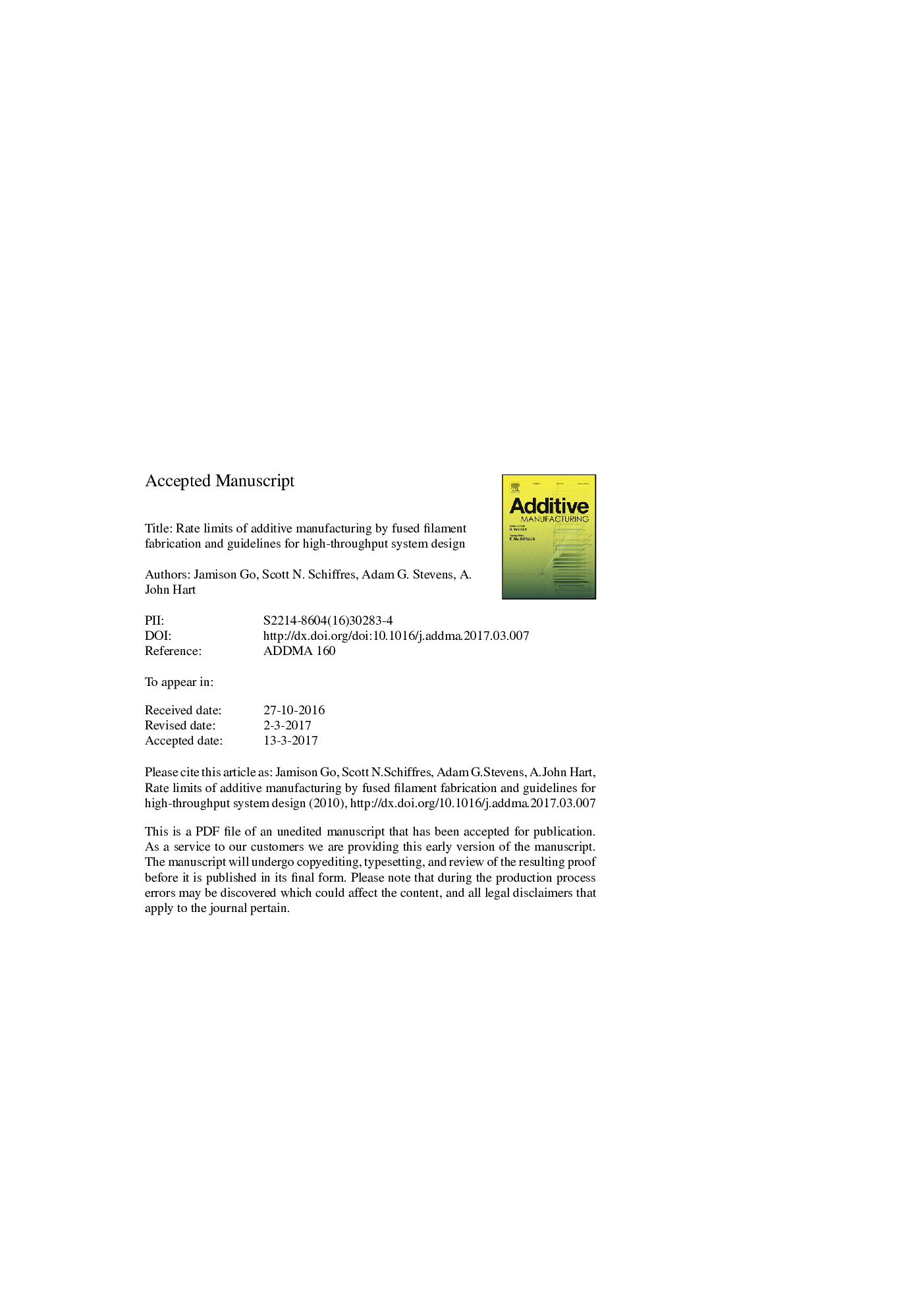| Article ID | Journal | Published Year | Pages | File Type |
|---|---|---|---|---|
| 5020116 | Additive Manufacturing | 2017 | 25 Pages |
Abstract
As additive manufacturing (AM) advances rapidly towards new materials and applications, it is vital to understand the performance limits of AM technologies and to overcome these limits via improved machine design and process integration. Extrusion-based AM (i.e., fused filament fabrication, FFF) is compatible with a wide variety of thermoplastic polymer and composite materials, and can be deployed across a wide range of length scales. However, the build rate of both desktop and professional FFF systems is comparable (â¼10's of cm3/h at â¼0.2Â mm layer thickness), suggesting that fundamental aspects of the machine design and process physics limit system performance. We determine the rate limits to FFF by analysis of machine modules: the filament extrusion mechanism, the heater and nozzle, and the motion system. We determine, by direct measurements and numerical analysis, that FFF build rate is influenced by the coincident module-level limits to traction force exerted on the filament, conduction heat transfer to the filament core, and gantry velocity for positioning the printhead. Our findings are validated by direct measurements of build rate versus part complexity using desktop FFF systems. Last, we study the scaling of the rate limits using finite element simulations of thermoplastic flow through the extruder. We map the scaling of extrusion force, polymer exit temperature, and average printhead velocity onto a unifying trade-space of build rate versus resolution. This approach validates the build rate performance of current FFF systems, and suggests that significant enhancements in FFF build rate with targeted quality specifications are possible via mutual improvements to the extrusion and heating mechanism along with high-speed motion systems.
Related Topics
Physical Sciences and Engineering
Engineering
Industrial and Manufacturing Engineering
Authors
Jamison Go, Scott N. Schiffres, Adam G. Stevens, A. John Hart,
